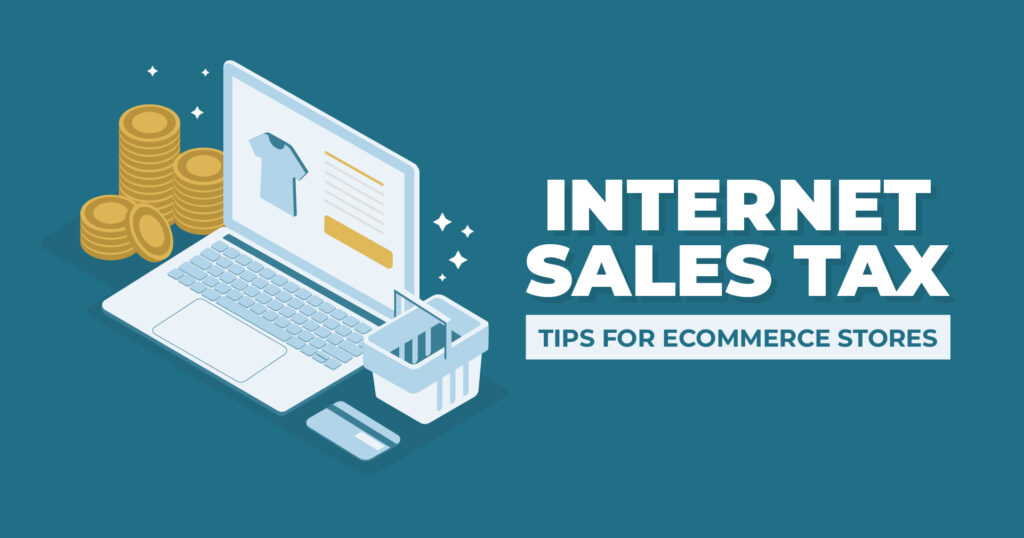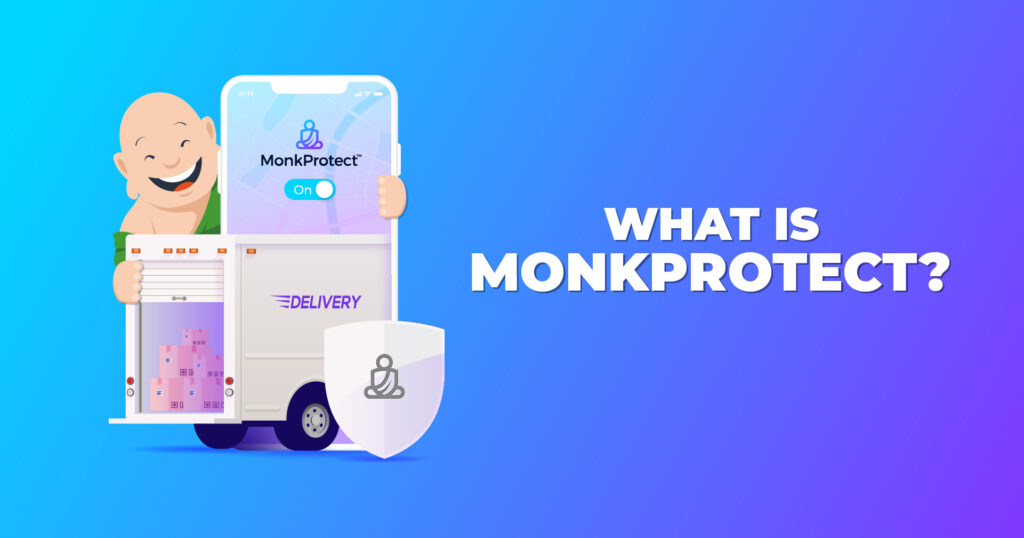April is tax time, which makes this a good time to bring up the topic of ecommerce sales tax. In reality, every day is tax time for U.S. ecommerce stores. That’s because ecommerce businesses need to do their taxes with every sale they make. That means complying with sales tax regulations in the state where your business is based, as well as understanding and following the rules in the states, counties, cities and jurisdictions, and countries where your customers are located — yes, all of them!
Full disclosure: we’re not tax experts. ShipMonk is an ecommerce 3PL that partners with hundreds of ecommerce clients of all shapes and sizes. We are experts in omnichannel ecommerce order fulfillment, order management software, and tech integrations — expertise that helps our clients track and process transactions on the back end. When it comes to sales tax, we can give you the information you need to get started, but the rest will be up to you and your friendly neighborhood tax professional. That said, let’s dig in.
What is Sales Tax?
Sales tax is a major source of revenue for states and local governments. It is considered a consumption tax, that is, a tax on consumable goods as opposed to a property tax or income tax. In most cases, sales taxes are not collected directly by state or local governments, but rather by the seller of the goods (that’s you) at the point of sale (that’s where your customer lives). It’s your job to calculate and collect the correct taxes from your customers based on where they live, set this money aside, and remit the funds to the state and local governments where they’re owed, on time, and according to their schedule.
This would be a piece of cake if every state and local government did the same thing, but you already know that nothing about taxes is easy. For an ecommerce business, taxes hold a special place at the nexus of pain and complexity.
What is Nexus?
Way back in 2018, ecommerce sales tax was only collected when the buyer was located in the same state where the seller had a physical presence, like an office or store. As ecommerce spread its wings, that loophole went out the window. Due to a landmark legal decision in 2018, South Dakota v. Wayfair, states have the right to charge buyers a “use tax” on out-of-state transactions, as long as the seller meets certain criteria — what is known as economic nexus.
Following this ruling, states began passing laws and setting their own nexus criteria to close that physical-presence loophole. If a seller meets at least one or more of the state’s nexus criteria, they have an obligation to collect “sales and use tax” in that particular state or jurisdiction. Each state can set its own criteria for nexus, but most have settled on some variation of the three criteria South Dakota uses:
- The seller has inventory stored in the state, even temporarily, in a warehouse, fulfillment center, or 3PL (like ShipMonk).
- The seller has employees or contractors working for the business in the state.
- The seller meets a threshold of $100,000 in sales, or makes a minimum of 200 separate transactions in the state (or some combination or variation of these thresholds).
To see the different nexus requirements for each state, check out this handy Economic Nexus State Chart. Once you’ve regained consciousness and determined that your ecommerce business has tax obligations in a particular state, you’ll need to figure out how to pay them.
Why You Don’t Want to File Your Own Sales Taxes
Every state has different sales tax rates (if they collect them), and these rates and requirements are changing all the time. Let’s look at the variables one by one.
Rates
- Some states (Alaska, Delaware, Montana, New Hampshire, and Oregon) don’t charge a general sales tax on purchases at all. Other states charge both state and local sales taxes, meaning the counties or cities (municipalities in gov speak) may charge an additional sales tax on top of the state tax. Then there’s Alaska, which doesn’t charge a state sales tax, but several of its municipalities do.
- Each state and local government sets its own general sales tax rate, ranging from 2.9 percent in Colorado to 7.25 percent in California. Local tax rates are added to the state tax rate to arrive at a total sales tax, which is the amount you need to collect at checkout. When you add in local taxes, Alabama, Arkansas, Louisiana, Tennessee, and Washington all have higher sales tax rates than California.
- The tax rate may also vary by product within the same state. Some states set a lower sales tax rate on items they deem essential, such as groceries, medications, or clothing. They may also impose higher tax rates on hotels or rental cars as a way of supplementing their revenue coffers with taxes paid primarily by non-residents (a.k.a. tourists).
- Some consumables, like alcohol, tobacco, and gasoline, are taxed at “selective” (rather than “general”) sales tax rates. These taxes (a.k.a. excise taxes) may be levied by the federal, state, and local government simultaneously on the same purchase, each at a different rate. Excise taxes must be collected by the seller and paid to each government entity separately.
Exemptions
- Many states allow exemptions (meaning no tax is charged) on certain goods the state considers essential, such as groceries, clothing, medications, textbooks and other products. Other states may simply charge a lower rate for these goods than their general sales tax rate.
- Some states offer tax-free shopping events to help low-income residents purchase specific essentials, such as school supplies.
- Tax exemptions may also be claimed based on how the product will be used, such as products bought with intent to resell, products that support industries important to the state (like agriculture or manufacturing), or products that encourage or promote public wellbeing (like food production).
- Some businesses, including non-profits, schools, religious organizations, and federal or state governments, qualify for tax exemptions on almost everything they buy. In these cases, it is up to the buyer to provide a valid, written certificate proving their exempt status at the time of sale.
Systems
- In most states, the tax is imposed on the purchaser, with the seller being responsible for collecting the tax and remitting it to the state.
- In some states, sales tax is imposed on the seller in the form of a gross receipts tax (see below) rather than on the buyer. The seller then has the option of passing the tax along to their purchasers by incorporating it into the price of goods.
- In still other states, the liability for the tax is shared by both sellers and buyers.
- If you are selling through an ecommerce marketplace such as Amazon or eBay, the marketplace is required to collect and remit sales taxes on your behalf, but it’s in your best interest to make sure they’re doing it accurately and on time. You’ll want to avoid overpayments, and you are ultimately liable for any penalties or underpayments.
Remittance
- Some states may require sellers to remit taxes each quarter, others monthly or weekly, depending on sales volume.
Other Forms of Sales Tax
Gross Receipts Tax
Several states and municipalities impose a gross receipts tax on the total gross revenue of any company engaged in business in their jurisdiction. Depending on the state, gross receipts tax may act as a substitute for sales tax (as is the case in Delaware and Oregon, where there is no sales tax). This means you may owe gross receipts taxes in states that don’t charge sales tax. In other cases, gross receipts tax is an additional tax imposed on the business (as in the states of Nevada, Ohio, Tennessee, Texas, and Washington, and the District of Columbia). The cities of Los Angeles, San Francisco, Philadelphia, Portland, and several cities in Washington state also impose their own, separate, gross receipts tax.
The difference between sales tax and gross receipts tax is that your business’ bottom line is not affected by sales tax because your customers ultimately pay it. Gross receipts tax, however, must be paid by the business (though many businesses simply raise their prices to cover it). Fortunately, most gross receipts tax rates are under 1 percent, but there are very few exemptions for gross receipts tax. Make sure that whoever is doing your taxes knows the difference, and that gross receipts taxes must be paid separately from remitting sales tax. The penalties are just as high, if not higher for not paying this tax on time.
VAT (Value Added Tax)
If you sell internationally, you need to know about VAT (Value Added Tax). VAT is the most common consumption tax collected by countries outside of the U.S., including all European Union countries and the United Kingdom. Like a sales tax, the customer pays the tax at checkout, and the seller is responsible for collecting and remitting the tax to that country. VAT requirements vary by country but, similar to economic nexus, businesses need to register to collect and remit VAT in countries where they have a permanent establishment, meet the country’s VAT sales threshold, or engage in certain activities.
How Sales Tax is Calculated
Sales tax is calculated by multiplying the purchase price of the taxable items by the sum of all state and local tax rates that apply in that delivery area. To calculate sales tax for a single transaction, convert all applicable state and local tax percentages to decimals, add them together, and multiply this total by the purchase price of all taxable items. Of course, the price of non-taxable items should not be included when calculating sales tax.
But what is meant by purchase price? Is it the price before or after discounts or coupons are applied? Does it include shipping and handling?
As usual, it depends. Sales tax is essentially a tax on the money your business earns in that state. So, if your business has a sale with 20 percent off all winter coats, you are earning 20 percent less than the normal price. Sales tax should be calculated on the amount your business is taking home, which is the discounted price. In the case of a manufacturer’s coupon or other third-party discount, if your business is going to be reimbursed by the third party as part of your agreement to offer the discount, then your business is earning the full sales price, and that is the amount subject to sales tax.
As for shipping and handling, many states tax shipping and delivery services, but taxability may depend upon the type of carrier, the contents of the package, whether or not delivery charges are separately stated on the invoice, and other factors. In general, if the contents are taxable, then so is the shipping and handling. If a package contains both taxable and exempt items, only the portion of the shipping charge allocated to taxable items is included in the sales tax calculations.
How to Collect Sales Tax on Ecommerce Sales
First, you’ll need to get registered in every state and jurisdiction where you have nexus or a physical presence. Most states require you to register within a certain time period after your sales or transactions exceed one of their nexus thresholds. Registering involves applying for a sales tax permit with each state’s Department of Revenue. To apply, you’ll need:
- Your personal and business contact information
- Your business type (Sole proprietorship, corporation, LLC, etc.)
- Your NAICS code, which is 454110 for online stores
- A Social Security number (SSN) or Employer Identification Number (EIN)
You’ll also need to register in every country where you meet the threshold for collecting VAT.
When it comes to calculating and collecting sales tax, we’ve got one word for you: software. Most ecommerce businesses use some type of automated sales tax solution that integrates with their ecommerce platform, marketplaces, POS systems, order management and accounting systems, and CRM or ERP systems if they have them. Once set up, these sales tax systems automatically calculate the appropriate sales tax for each order based on the delivery address, track and implement rate changes, alert you when taxes are due or you hit a nexus threshold in a new state or country, and compile data for tax preparation, filing, and record-keeping.
When it’s time to file returns, transactions should be broken down by state, county, city, and district, so that each respective government can properly allocate the funds.
It’s Complicated
With over 13,000 tax jurisdictions in the U.S. alone, you can see why collecting and remitting sales tax is so complicated. At least now you know why your accountant charges so much.
Still have questions? Consult the Sales Tax Institute’s handy list of sales tax FAQs. Got questions about scaling your business as you expand into these new states and countries? We can help with that one, too. With a national footprint of eight U.S. fulfillment center locations, we can help you meet delivery expectations no matter where you’re growing. Our facilities in the Czech Republic and UK and our DDP international shipping solutions will turbocharge your international sales growth, while our facilities in Mexico and Canada can help you save thousands on duty-free imports with Section 321. Contact ShipMonk today for a free quote, or a demo of our award-winning order and inventory management system.
Disclaimer: The information contained on this site does not constitute tax advice or an accountant-client relationship. This information is intended as general guidance on matters of interest only. Due to the complexity of tax law and the changing nature of laws, rules, and regulations, the information contained on this site may not always be accurate. Accordingly, the information on this site is provided with the understanding that the authors and publishers are not herein engaged in rendering legal, accounting, tax, or other professional advice and services. As such, it should not be used as a substitute for consultation with professional accounting, tax, legal or other competent advisors. You should consult with your tax professional regarding your specific circumstances.





